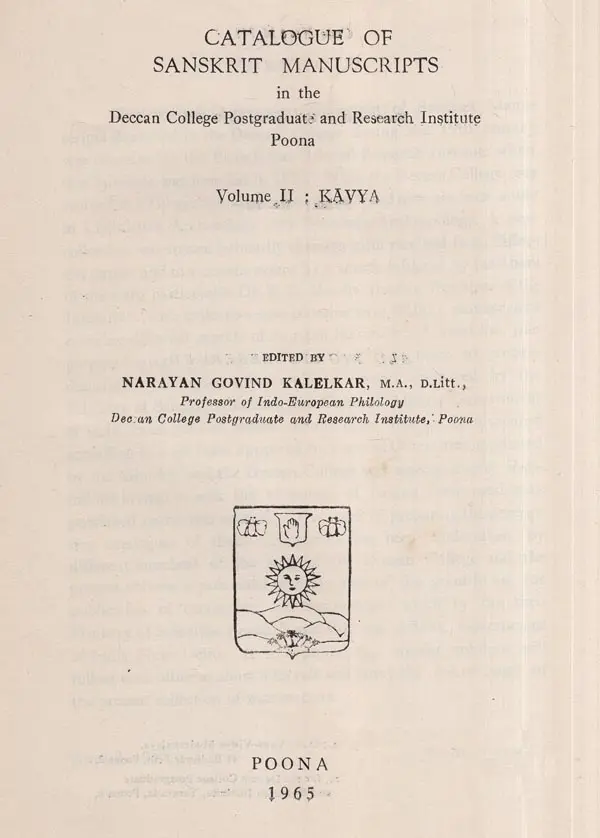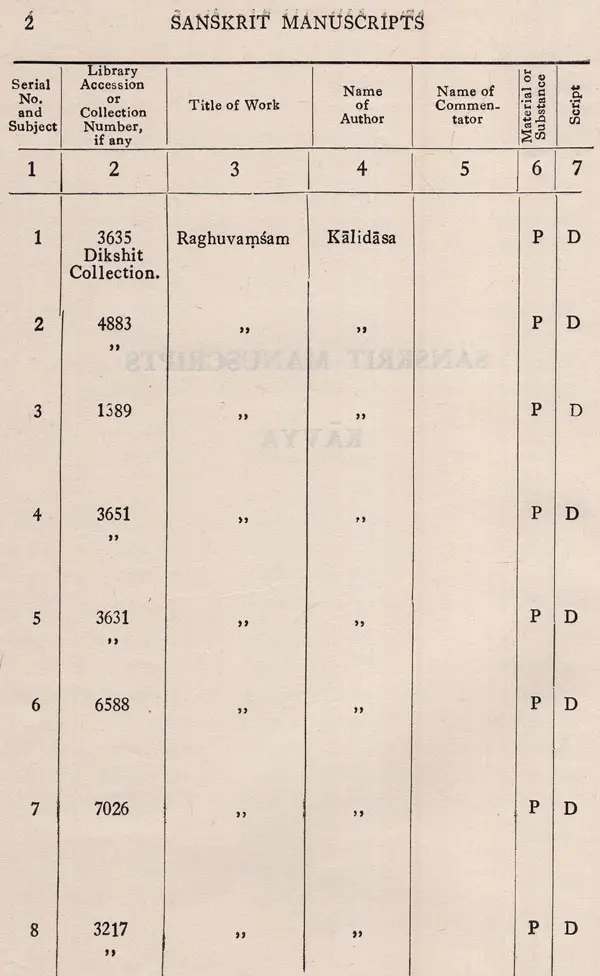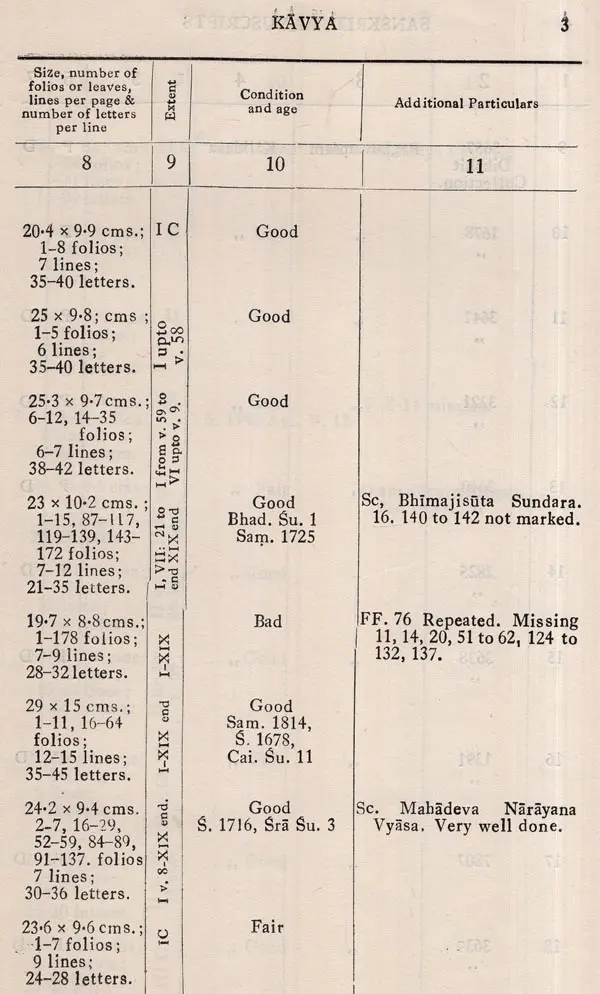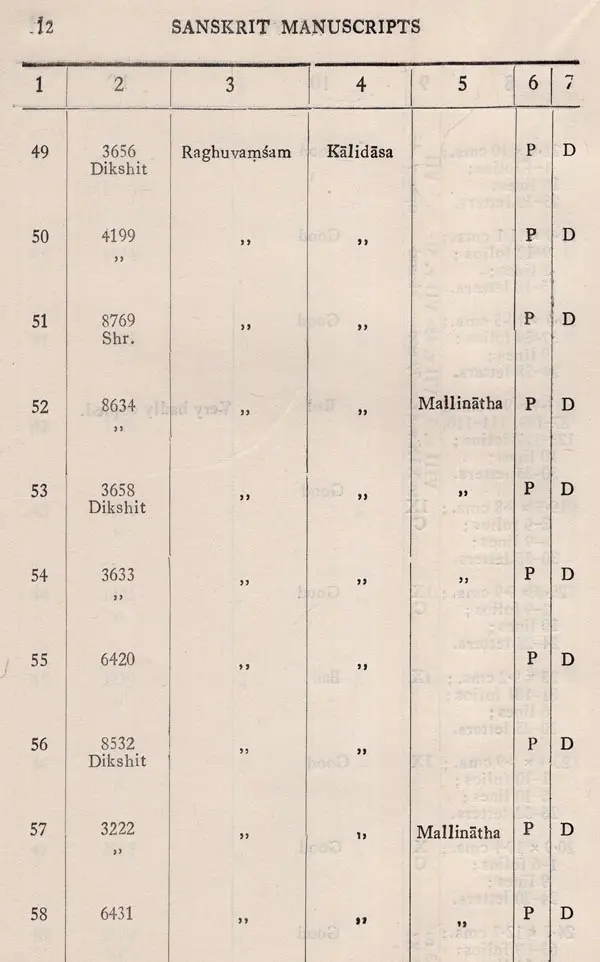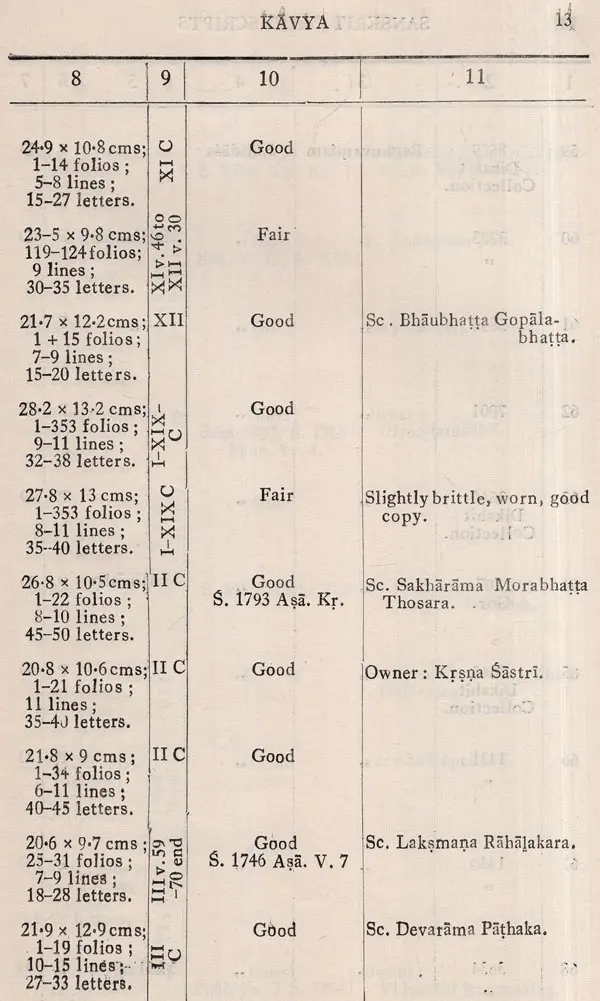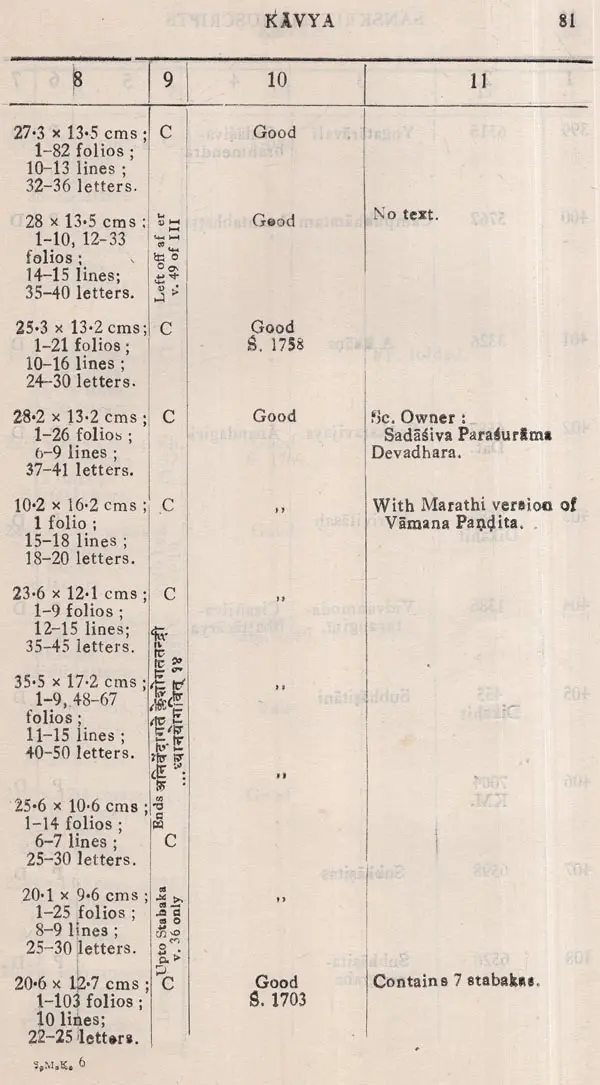
Catalogue of Sanskrit Manuscripts: Kavya Manuscripts in Volume 2 (An Old and Rare Book)
Book Specification
| Item Code: | UBE930 |
| Author: | Narayan Govind kalelkar |
| Publisher: | Deccan College Postgraduate and Research Institute |
| Language: | English |
| Edition: | 1965 |
| Pages: | 97 |
| Cover: | PAPERBACK |
| Other Details | 9.50 X 6.50 inch |
| Weight | 140 gm |
Book Description
The original Government Collection of Sanskrit Manuscripts deposited in the Deccan College during the 19th century was deposited in the Bhandarkar Oriental Research Institute when that Institute was founded in 1917. When the Deccan College was revived in 1939 as a foundation for research and postgraduate study in Linguistics, Archaeology and Sociology-Anthropology, a new collection was started primarily through gifts received from different parties and to a certain extent by a search initiated by members of the staff, particularly Dr. R. G. Harshe, the firs. Registrar of the Institute This collection now contains over 10,000 manuscripts covering different aspects of Sanskrit literature. A hand list was prepared several years ago and steps had been taken to prepare descriptive catalogues when under a project approved by the Ministry of Scientific Research and Cultural Affairs, Government of India, catalogues of Indian manuscripts were to be prepared according to a set form approved by a special Committee appointed by the Ministry and the Deccan College was among several institutions invited to seek the advantage of having their catalogues published under this scheme. The work of preparing the descriptive catalogues of these manuscripts has been undertaken by different members of the staff of the Deccan College and the present volume is published with the help of the grant-in-aid for publication of catalogues and manuscripts given by the then Ministry of Scientific Research and Cultural Affairs, Government of India, New Delhi. It is expected that similar volumes will follow each other at short intervals and cover the entre range of the present collection of manuscripts.
All the manuscripts are in the Devanagari script and, with the exception of one which is on cloth, all are of paper, of various qualities.
Only 79 manuscripts are dated. Of these two have omitted the year and cited the month only. The oldest of these, No. 378, is a copy of Sragaratilakam written by one Kesava in the Samvat 1510 (A.D. 1454). A few belong to the latter half of the 17th century and the remaining to the 1 th and 19th centuries.
The total number of scribes who have signed their names is 80. Prominent among these are Candole (9 mss ), Devadhara (4 mss.) and Toke (3 mss.).
The Mahakavyas account for nearly three fourths of the total number of manuscripts. Next come collections of subhasitas (18) which include two copies of Sarngadharapaddhati, the Satakas of Bharthari (15) and Gitagovindam (13).
A large number of manuscripts are written very carelessly and show a lack of uniformity in the size of letters and the spacing of lines. Grammatical correctness is not to be found in every copy to an equal degree. This may mean that a number of scribes were just writers who did not study any grammar and rules of spelling. A few scribes have mentioned the place where the copy was written and the name of the person who employed them for writing it.
**Contents and Sample Pages**
